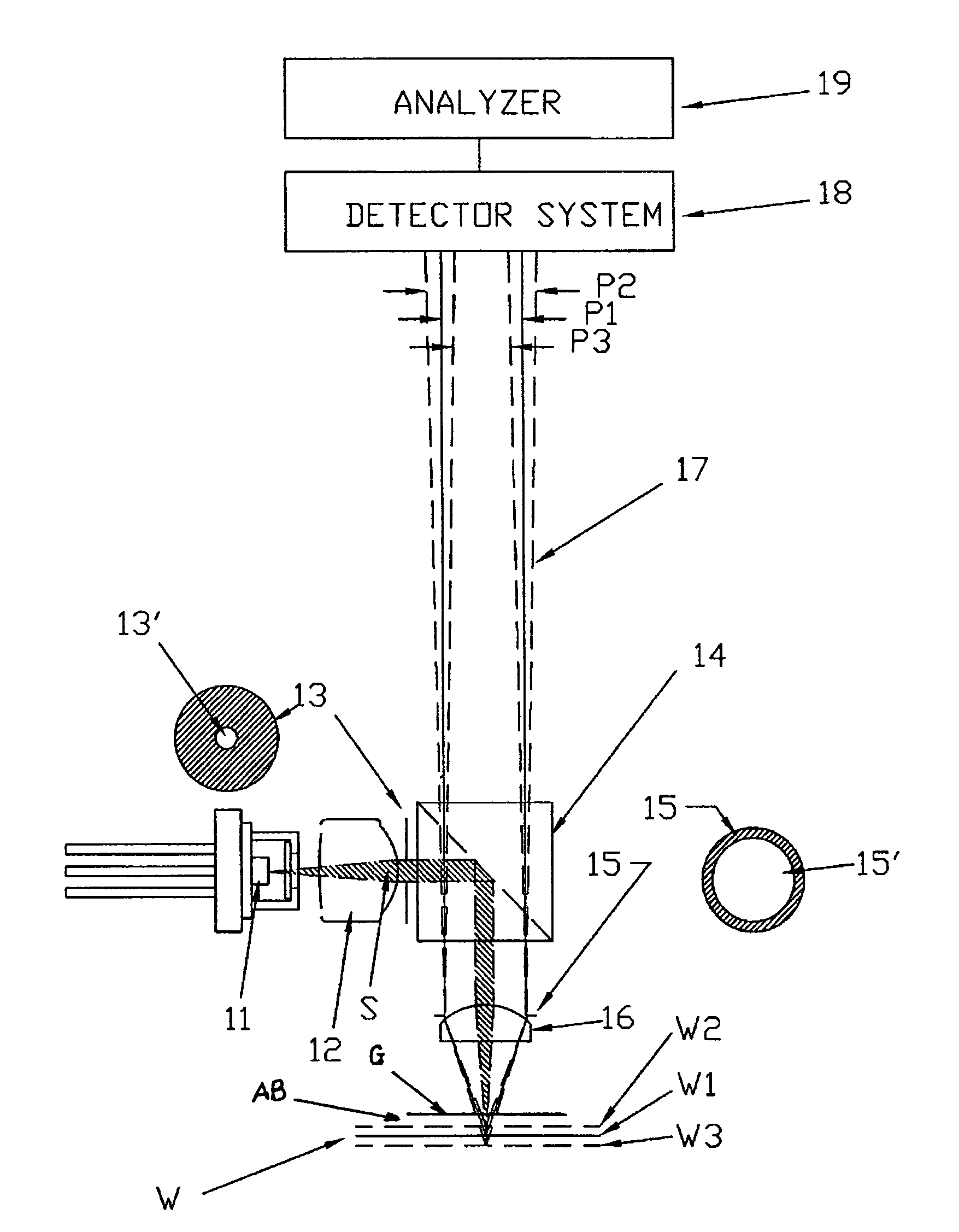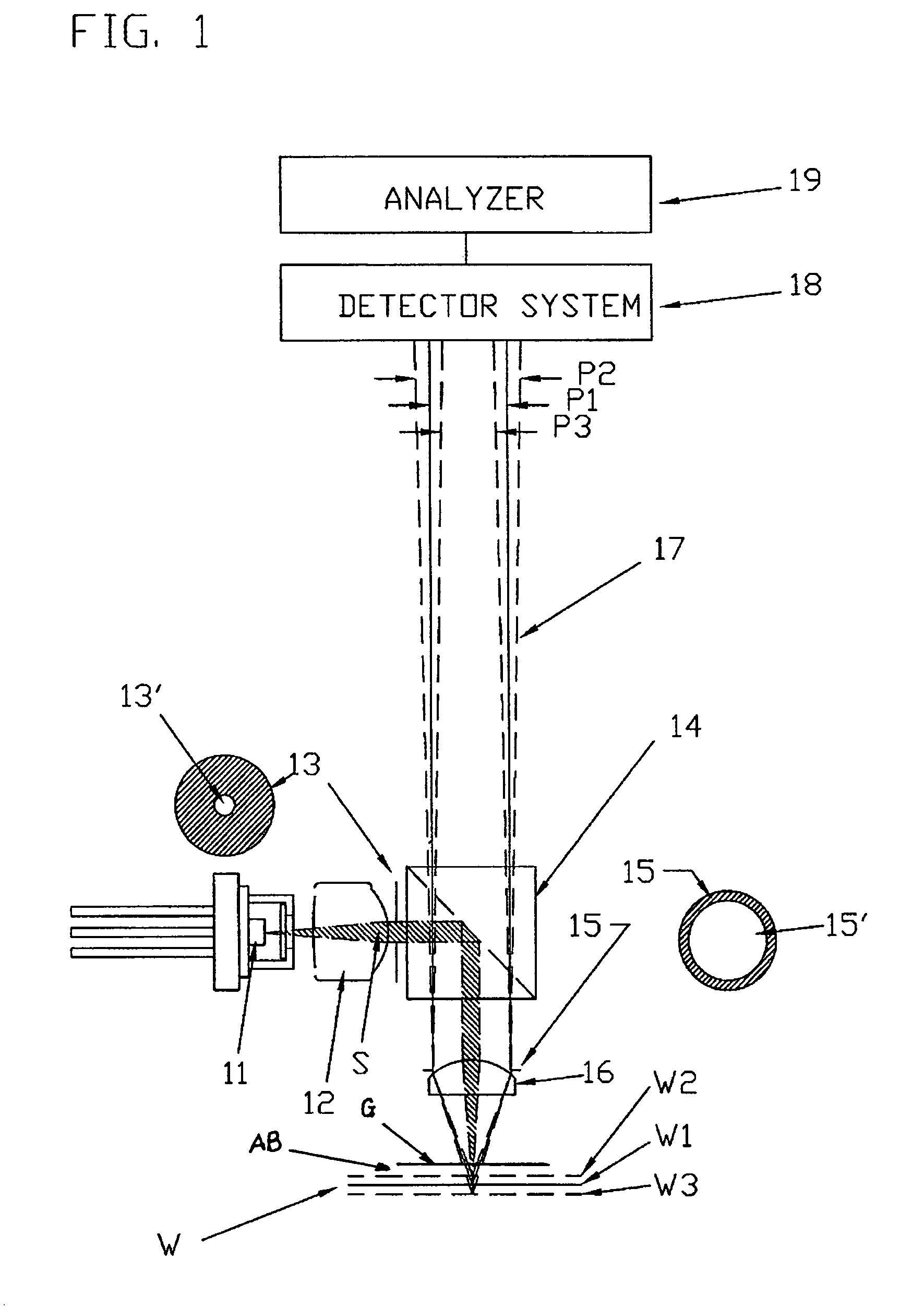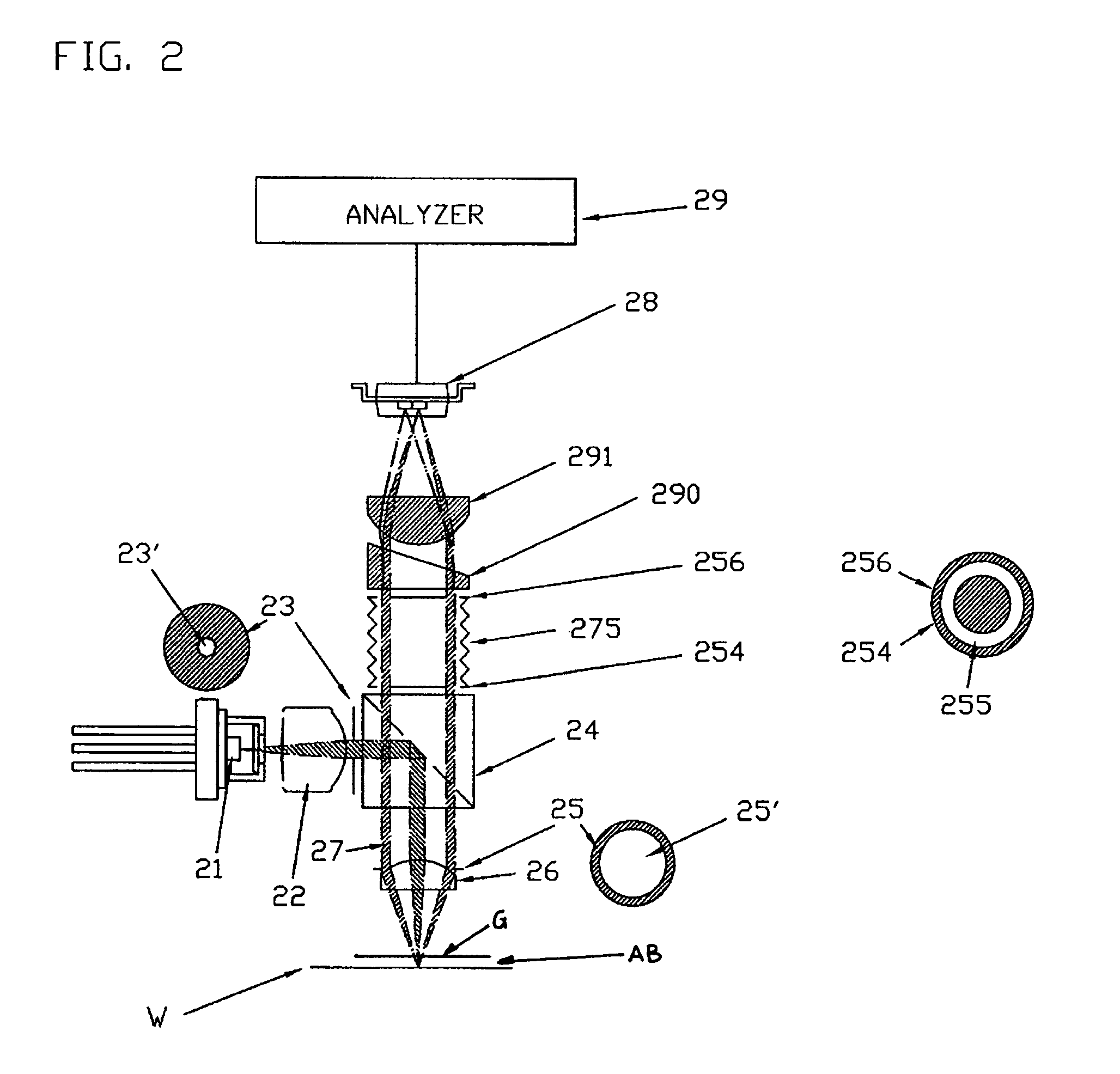Device and process for optical distance measurement
a technology of optical distance measurement and optical device, which is applied in the direction of distance measurement, instruments, surveying and navigation, etc., can solve the problems of significant interference with the functioning difficult to use the coherent light of the laser diode, and difficult to achieve the effect of avoiding interference effects and essentially constant reflection effects
- Summary
- Abstract
- Description
- Claims
- Application Information
AI Technical Summary
Benefits of technology
Problems solved by technology
Method used
Image
Examples
Embodiment Construction
[0060]The particulars shown herein are by way of example and for purposes of illustrative discussion of the embodiments of the present invention only and are presented in the cause of providing what is believed to be the most useful and readily understood description of the principles and conceptual aspects of the present invention. In this regard, no attempt is made to show structural details of the present invention in more detail than is necessary for the fundamental understanding of the present invention, the description taken with the drawings making apparent to those skilled in the art how the several forms of the present invention may be embodied in practice.
[0061]The present invention combines features of a confocal sensor supported on an air bearing with features of laser triangulation. As shown in FIG. 1, a light source 11, e.g., a low coherence light source, such as a superluminescent diode (SLD), generates a source beam S directed through a lens or lens system 12 through...
PUM
 Login to View More
Login to View More Abstract
Description
Claims
Application Information
 Login to View More
Login to View More - R&D
- Intellectual Property
- Life Sciences
- Materials
- Tech Scout
- Unparalleled Data Quality
- Higher Quality Content
- 60% Fewer Hallucinations
Browse by: Latest US Patents, China's latest patents, Technical Efficacy Thesaurus, Application Domain, Technology Topic, Popular Technical Reports.
© 2025 PatSnap. All rights reserved.Legal|Privacy policy|Modern Slavery Act Transparency Statement|Sitemap|About US| Contact US: help@patsnap.com



